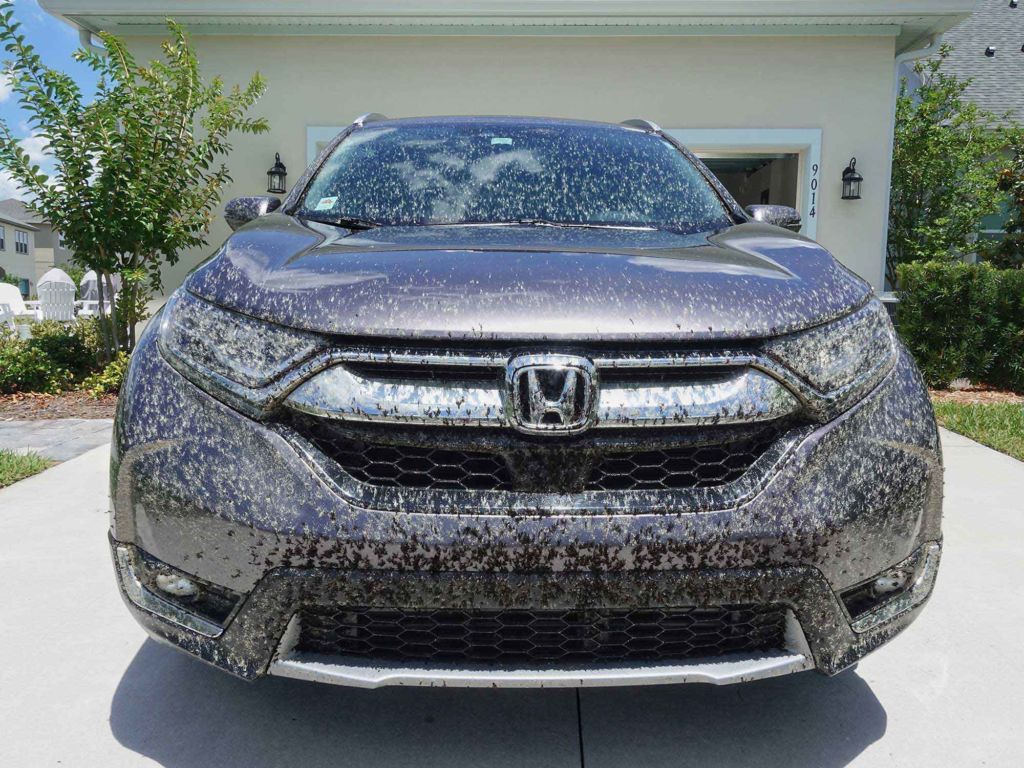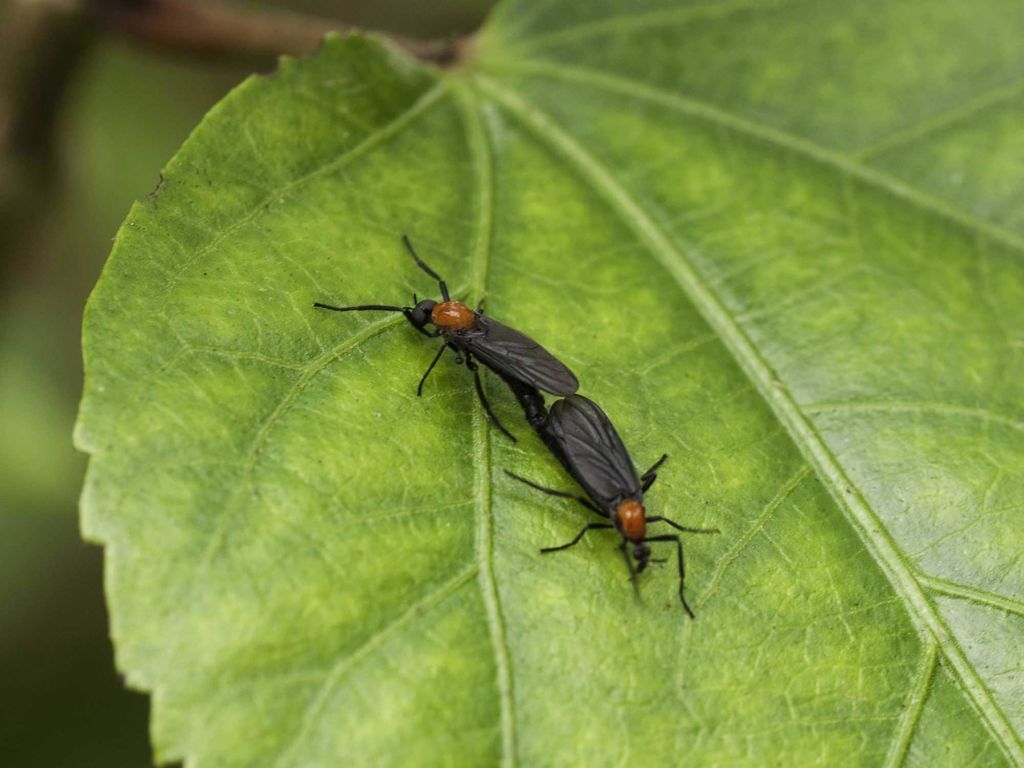
Ask any Florida native when he or she first learned about lovebugs and you’ll probably hear a story about a childhood moment where these peculiar little pests got too close for comfort, maybe even having been mistaken for a wasp. Or ask anyone who has taken a road trip to Florida or made the cross-state trek to Orlando’s theme parks, and the response will be expletive-laced grumbling about how hard it is to wash a car the next day.
If you’re planning to visit or move to the Sunshine State someday it will help to be familiar with lovebugs. So, here’s a handy guide to understanding and coping with these semi-helpful insects, as well as eventually scrubbing them off the front of your car.
Hey, it sounds crazy and gross, but IYKYK.
Why are they called lovebugs?
Because “attached at the rear ends bugs” doesn’t quite roll off the tongue.
A species of March fly – technically they’re known as “plecia nearctica” – these annual pests are dubbed “lovebugs” because they basically spend their adult lives mating. (That’s why the male and female are always attached to each other and flying around in pairs.) And seeing as they don’t really have that great of a life span, you have to admit they’re going out in style.
Depending on where you are, you might also hear them referred to as honeymoon bugs, which is another cute way of describing them so you don’t have to tell children what they’re actually doing.
Where did the lovebug originate?
We cannot be certain when lovebugs were first spotted in Florida, as some records have them (but more likely something like them) sticking to people’s clothing as early as the late 19th century. But it is believed they reached the Panhandle by the late 1940s, with the first pair undoubtedly clinging to the front of a Louisiana traveling salesman’s Pontiac Streamliner.
Like most snowbirds, they were working their way south by the 70s and the rest is history. Because they weren’t native, they thrived in Florida and the population exploded over time.
Are lovebugs Man-Made?

No. But there are still some staunch conspiracy theorists in Florida who believe that lovebugs were created in a laboratory at the University of Florida with the goal of killing mosquitoes. There are a couple of problems with this theory. First, lovebugs couldn’t harm a fly. They’re not designed to bite or sting, and they certainly won’t spray venom or poison. Second, lovebugs are more of a daytime phenomenon while mosquitoes are a nighttime menace. Face it: lovebugs are just one of nature’s little practical jokes.
When is lovebug Season in Florida?
If you ask a Floridian, it’s always lovebug season, but the truth is the only better indicator that it’s almost May is the oversharing of Justin Timberlake memes. Typically, the first lovebug season begins in late April and lasts through May, and just when you think they’ve disappeared, the second season kicks off in late August and lasts through September.
How long do lovebugs live?
Short answer: Not long enough that you should consider adopting one as a pet.
The eggs take only a few days to hatch, and then it’s a matter of how much “food” (dead plants or critters) the larvae have access to. Some lovebugs can stay in their “baby” stage for months, but because it’s so warm in Florida, during both seasons, they can become pupae in roughly four months, and that stage only lasts a week or so.
At that point they become adults and crank Barry White to 11, because they only have about four or five days to live.
Are lovebugs monogamous?
While they’re not putting up Wilt Chamberlain numbers, a male lovebug isn’t necessarily faithful to the first female he grabs from the lump of soil they were born in. Males can complete the job (wink, wink) in 12 hours, give or take, but the pair can remain united for longer—sometimes until death, but that’s not always the case.
Some males feel like they have, ahem, more to give and disconnect to find another female.
How do you remove lovebugs from cars?
It used to be that if you lived in or drove through Florida, you basically had to accept that the front end of your automobile would look like a graveyard for lovebugs. The fact is, they love a good highway because it’s scorching hot and surrounded by grass, soil, and more decaying things than a bug could ever dream for.
Fortunately, we’ve come a long way in protecting cars, and what used to be a maddening reality has been downgraded to a stressful annoyance. The best precautionary measure to take is giving your whip a good, old-fashioned wax job. Don’t skimp either. Put the effort into it, because a nice coating is the first line of defense between you and a long day of scrapping bug guts and crying about resale value.
- Meguiar’s G7016 Gold Class Carnauba Plus Premium Liquid Wax Wax won’t stop the bugs from splattering, though, so there’s still work to be done. Start with a strong bug cleaner that can be sprayed on and loosen those guts in under a minute, allowing them to be wiped away with a rag.
- Bugs N All – Multi-Surface Vehicle Cleaner While it’s nice to just wipe your acidic bug splatter problems away, it also doesn’t hurt to use this as an opportunity to give your car a great once-over. This will get it back to sparkling the way it did before you plowed through a floating mess of copulating lovebugs while zipping along I-95.
- Chemical Guys 14-Piece Arsenal Builder Car Wash Kit And once you’ve done all this, if there are any lingering corpses, there’s still a secret weapon that you’d never expect—dryer sheets. That’s right, those little rectangles you use to make your pillowcases softer are actually amazing at getting lovebugs off the front of your car.
- Bounce Fresh Linen Scented Fabric Softener Dryer Sheets Simply wash your car with water and concentrate on the areas that have the most lovebugs’ remains. Use your soap or bug remover first to see if that does the trick, and then take a dryer sheet to the leftovers and scrub, discarding your sheets as necessary.
It’s not a permanent solution, but it’ll hold you over until next lovebug season.
More stories like this:
- Not-So-Welcome Home: Invasive Species in Florida
- Is Florida the Lighting Capital of the World?
- Popular Myths about Florida Debunked
- Urban Legends about Florida That Keep You Awake at Night
- Was There Actually a Fountain of Youth in Florida Once?
- Is St. Augustine Really the Oldest City in America?
- 11 Crazy Things To Co in Orlando
- 25 Fun Things to Know About Disney’s Animal Kingdom on its 25th Anniversary
- Things to do in Orlando Besides Theme Parks
- Is There a Six Flags Park in Florida?
- Is Jacksonville Really the Country’s Biggest City?
- Is Florida the Hurricane Capital of the World?
- Why Should You Shuffle Your Feet on Florida Beaches?





